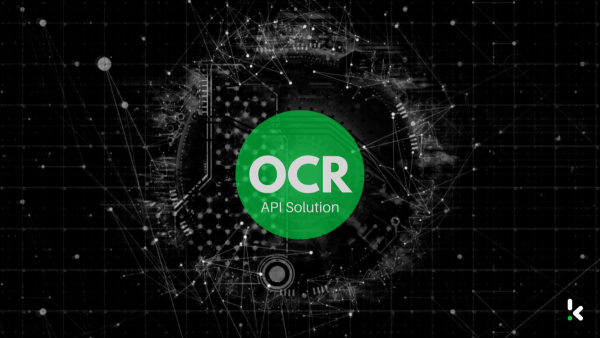In a world increasingly dominated by keyboards and touchscreens, the art of handwriting has found an unexpected resurgence. However, this resurgence isn’t a return to the past; it’s a bridge to the future, powered by AI Handwriting Recognition. This article explores the pivotal role AI Handwriting Recognition plays in the digital era, enabling us to unlock the full potential of handwriting in a digital world.

Understanding AI Handwriting Recognition
AI Handwriting Recognition is a technological marvel designed to decipher and digitize handwritten text. It stands at the intersection of artificial intelligence and the enduring art of handwriting.
- Neural Networks and Deep Learning: AI employs neural networks and deep learning algorithms to analyze and understand the intricate patterns of handwritten characters.
- Training and Pattern Recognition: Through extensive training on diverse handwriting styles, AI systems learn to recognize and convert handwritten text into digital formats with remarkable accuracy.
AI Handwriting Recognition has evolved from basic character recognition to sophisticated systems capable of interpreting various handwriting styles, fonts, and languages. This evolution continues to refine its capabilities and adaptability.
The Resurgence Of Handwriting In A Digital World
Handwriting is not just a mode of communication; it’s a deeply personal and culturally significant form of expression. It carries the essence of individuality, emotions, and authenticity.
Traditional handwriting recognition software often fell short in capturing the nuances and diversity of handwritten scripts. It struggled with cursive writing, artistic flourishes, and personal quirks.
AI Recognition serves as the bridge, preserving the art of handwriting while seamlessly integrating it into the digital landscape. It embraces the uniqueness of each script, making it accessible and functional in a digital world.
The Transformative Power Of AI Handwriting Recognition
AI preserves the artistry of handwriting. It captures the strokes, curves, and idiosyncrasies of individual scripts, ensuring they are not lost to time.
In the digital realm, AI Handwriting Recognition revolutionizes note-taking and annotation. Users can write, draw, and annotate on digital devices, maintaining the tactile experience of handwriting while benefiting from digital convenience.
AI Handwriting Recognition enhances accessibility. It accommodates individuals with diverse needs, including those with disabilities, by providing tools for text-to-speech conversion and adaptable font sizes.
Applications Across Industries
In education, AI Handwriting Recognition transforms digital learning. Interactive notebooks and digital classrooms become more engaging, fostering better learning experiences. It also promotes inclusive education by aiding students with diverse learning needs.
The healthcare industry benefits from AI Handwriting Recognition by ensuring accurate electronic health records and medical notes. It streamlines prescription management and contributes to data accuracy, ultimately improving patient care.
In the business and finance sector, AI Handwriting Recognition simplifies processes like digital signatures and contract management. It enhances data entry and analysis, making financial operations more efficient.
Challenges And Considerations
AI Handwriting Recognition faces the challenge of accommodating diverse languages and handwriting styles. Continued advancements in multilingual support are essential.
Protecting handwritten content is paramount. AI Handwriting Recognition must comply with data regulations and ensure the privacy of sensitive information.
Future Trends And Innovations
The future promises real-time handwriting recognition, leading to interactive digital handwriting experiences and augmented reality applications that seamlessly blend the physical and digital worlds.
AI Recognition will synergize with AI to offer predictive text and content understanding. This will result in enhanced personalization, contextual insights, and organized content management.
In conclusion, AI Handwriting Recognition opens the door to a promising future, where the tradition of handwriting harmoniously blends with the possibilities of technology. It preserves the art, enhances accessibility, and transforms digital experiences across industries. The invitation is clear: embrace AI Recognition to unlock a future where the power of the pen meets the potential of the pixel.
Check Handwriting OCR API
The Handwriting OCR API from Zyla Labs Marketplace is a powerful tool for converting handwritten text to digital in a matter of seconds. It is easy to use and provides accurate results, even for challenging handwriting.

With the Handwriting OCR API, you can:
- Digitize handwritten documents, such as forms, invoices, and letters
- Extract handwritten text from images, such as photos of signs and menus
- Convert handwritten notes to digital text
- Make handwritten text accessible to people with visual impairments
The Handwriting OCR API is a valuable tool for businesses and individuals alike. It can help businesses to save time and money by automating the process of digitizing handwritten documents. It can also help individuals to make their handwritten notes and documents more accessible and easier to manage.
Try the Handwriting OCR API today and see how easy it is to convert your handwriting to digital.
All You Need To Do To Make Use Of It Is:
- First, go to Handwriting OCR API and click the “START FREE TRIAL” button.
- You will be able to access the API once you have registered with the Zyla API Hub.
- Hit the “OCR” API endpoint.
- Then, click the “test endpoint” button to make an API call and examine the results on your screen.
For example, if we introduce the following image:

We will get a response similar to this:
{
"result": "1",
"subScans": [],
"value": "JRR Tolkien.\n1923"
}
Zyla Labs, a marketplace with top-notch customer service, has made it much easier to find APIs. Choose from among the more than 1200 APIs that are offered by selecting a category, phrase, or programming language. In-depth details about each API, such as its price, supporting documentation, and terms of service, are offered in the market.
Want to know more? Read Make Your Handwriting Digital With An OCR API

